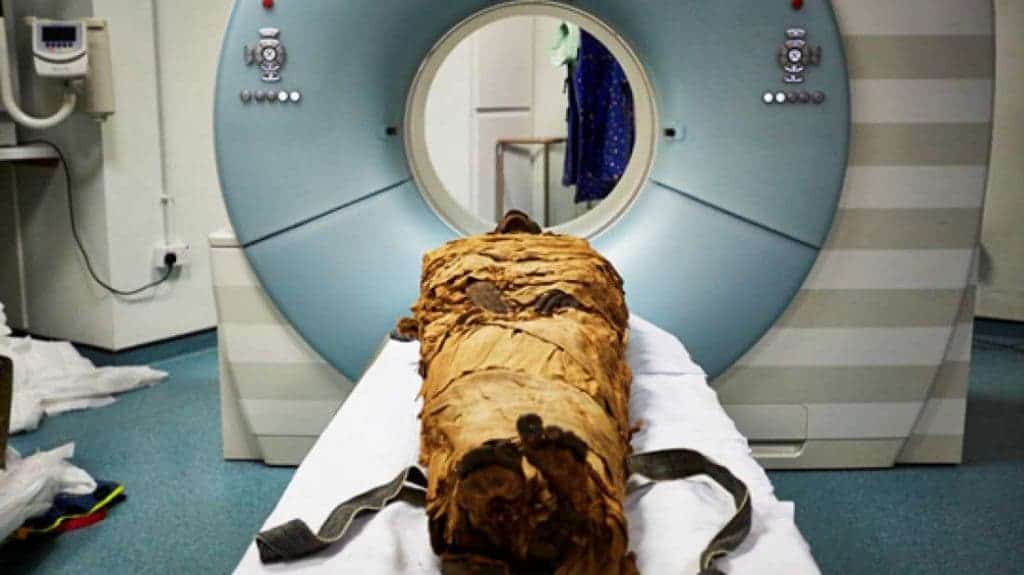Nesyamun was an ancient Egyptian priest and scribe who lived and served during the reign of pharaoh Ramses XI. Almost 3,000 years ago, Nesyamun’s prayers and wise words were probably heard by many. However, since he passed away and was mummified, the Egyptian priest has been a man of few words — until now.
Nesyamun’s mummy is one of the most well preserved in the world. For years, it has been housed at the Leeds City Museum until David Howard from the University of London took interest in the mummy and performed a CT scan on its throat.
The non-invasive imaging technique revealed the tissue and structure of Nesyamun’s vocal tract without disturbing the mummy itself.

Measurements like the position of the airway, bone and soft tissue structures, allowed the researchers to digitally reconstruct Nesyamun’s vocal tract. The resulting 3D model of the priest’s vocal tract was then 3D-printed and fitted onto an artificial electronic larynx (commonly known as the vocal vox) to recreate Nesyamun’s voice.

The researchers produced a single uttering — a vowel sound, somewhere between the e and a sounds in the words bed and bad. That may sound disappointing to some, but as a proof of concept, it will do for now. You can hear Nesyamun’s voice in the embedded clip below.
“The sound of a vocal tract from the past has been synthesized to be heard again in the present, allowing people to interact with the past in completely new and innovative ways,” wrote the researchers in their study, which is part of a project called Voices of the Past.
Of course, this is likely not the most accurate reproduction. The CT scan was performed while the mummy was in a reclining position, with its head tilted back. In other words, the reconstructed voice will sound like that of a man seated inside a coffin. Secondly, some of the vocal tract tissue was naturally degraded by the passage of time. Nesyamun’s tongue, for instance, had lost a good portion of its muscle bulk while the soft palate was absent.
Nesyamun’s voice was probably famous in Thebes, where he performed ritual duties that involved spoken and sung elements. An epithet inscribed on his coffin reads “true of voice”, which likely means the man’s word was regarded in high esteem. Whether or not Nesyamun sounded anything remotely like this reconstruction is unclear, but it’s simply fascinating to see that even a person’s voice can be brought back from the dead — with a little help from science.
The findings appeared in the journal Scientific Reports.


